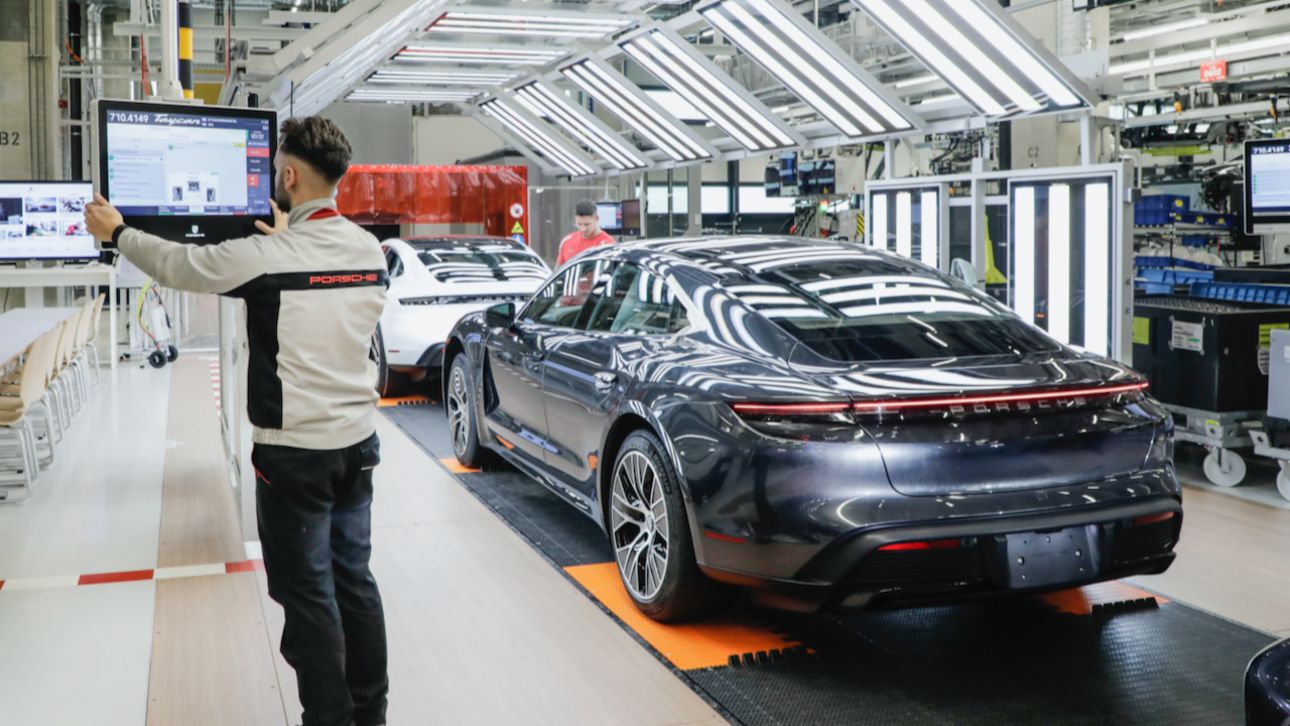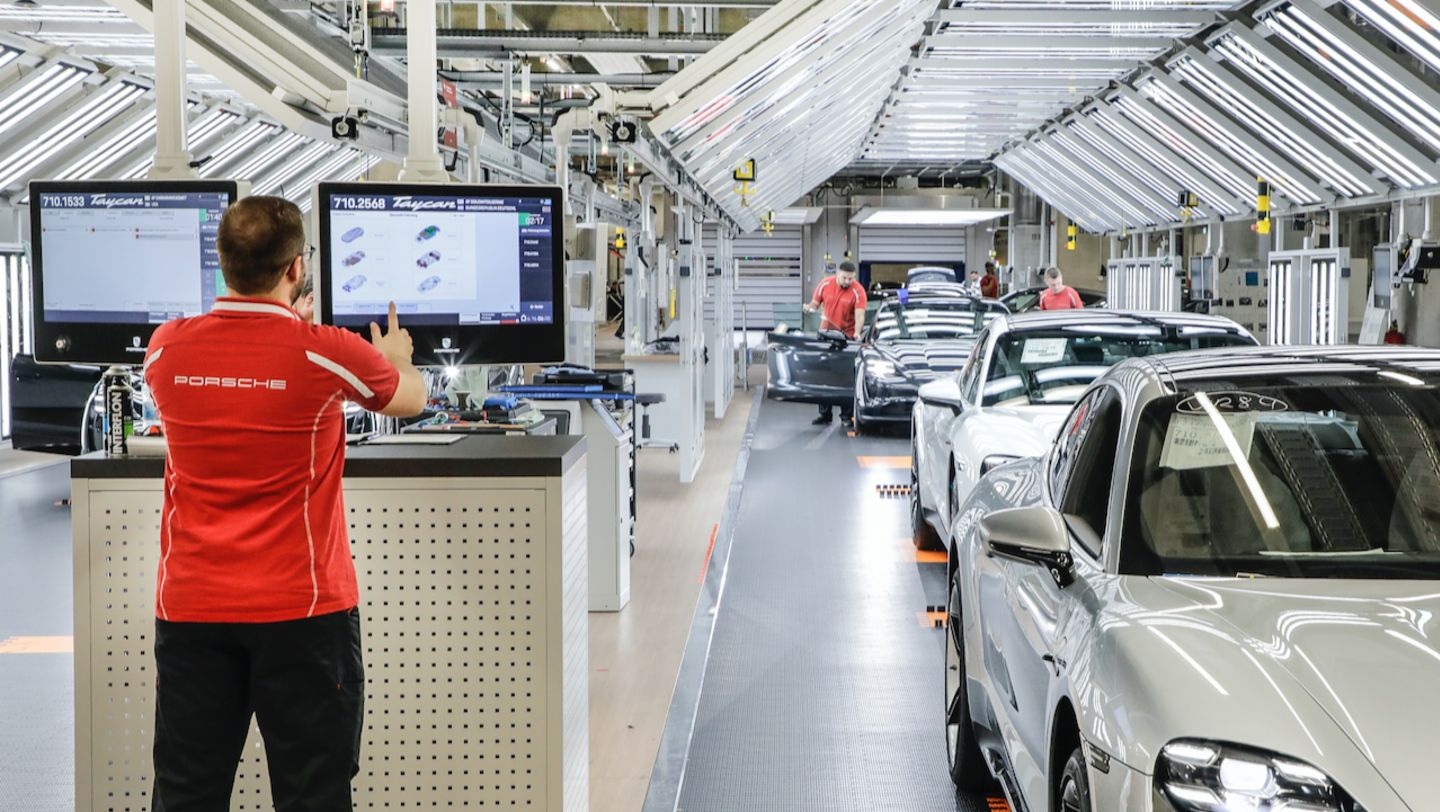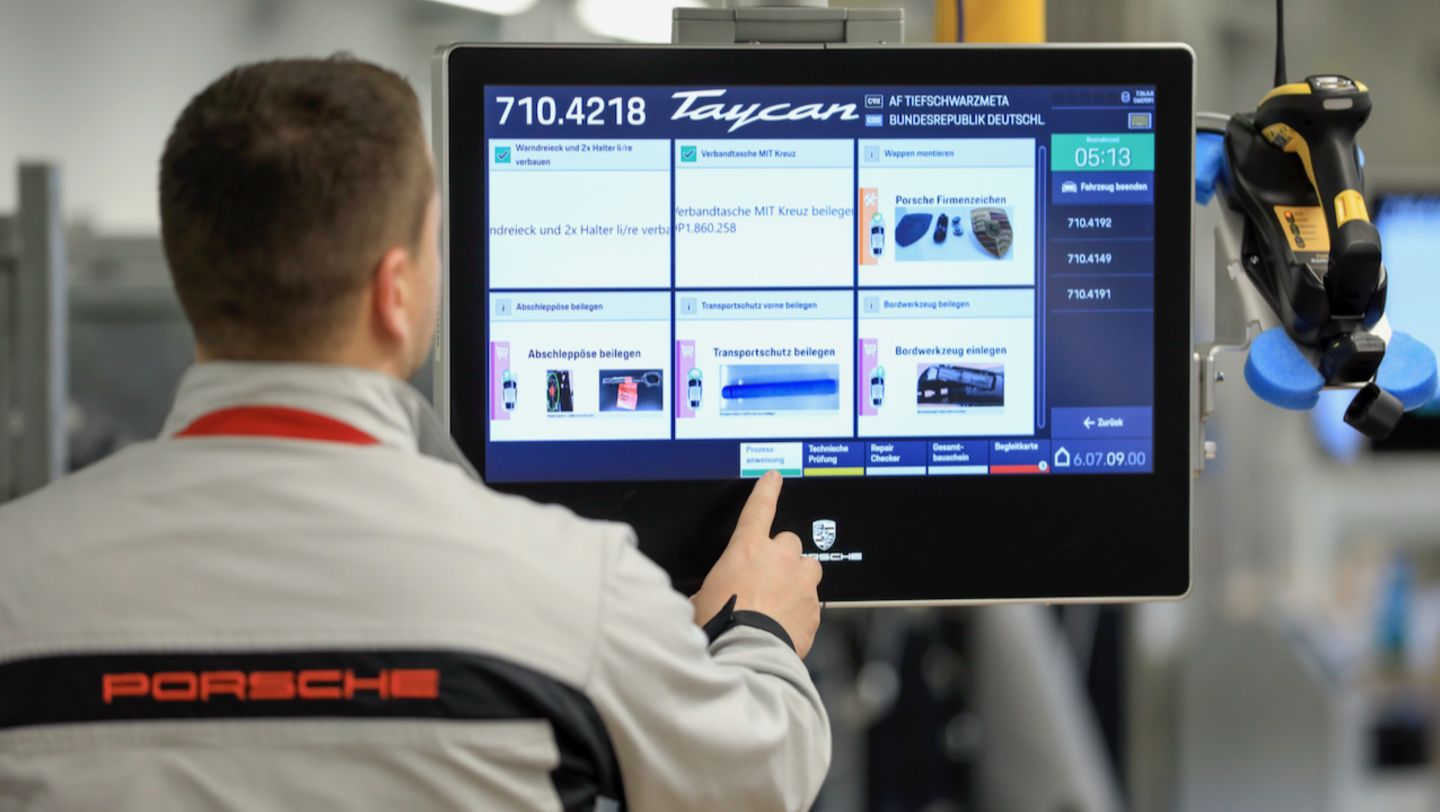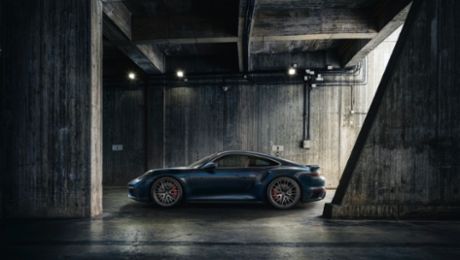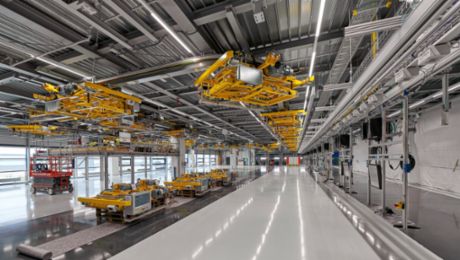Porsche Production 1.0
Zuffenhausen in the 1950s and 1960s: car assembly at Porsche still had the characteristics of a craft manufacturing process. But it was nevertheless based on clear ideas for efficient production. Short distances for the individual components, cleanliness and tidiness and highly-skilled employees provided the basis for the Porsche quality standards that are still renowned worldwide up to the present day. In the assembly hall, the bodies were pushed by hand on trolleys from one station to the next. Always accompanied by a vehicle routing card. This card contained the necessary information about colour, interior equipment details, ordered options and other individual customer requests.
Even back then, this ensured that every customer received their own very individual Porsche. More than half a century later, the old vehicle routing cards made of paper are now being given a second life in the virtual world: in a task taking two and a half years, Porsche Classic has digitised all of the old documents. All Porsche Classic Partners can access them and therefore use the documents to provide targeted support for owners of classic Porsche vehicles when it comes to servicing, maintenance and restoration.
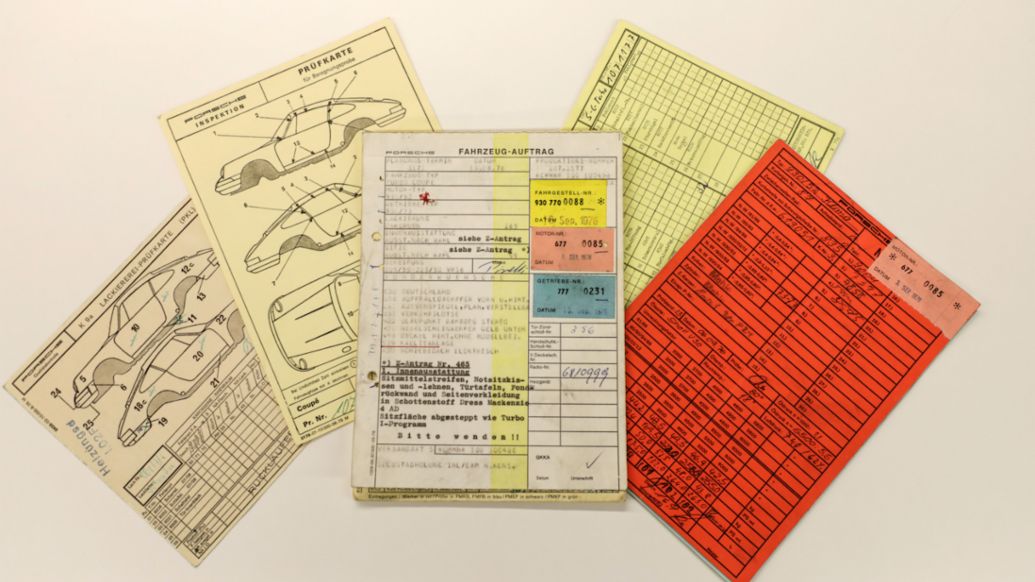
Porsche Production 4.0
Porsche vehicles are still also produced hand-in-hand at the start of the 21st century – with the difference that the process is supported by numerous digital assistants. One of these is the electronic vehicle routing card (EVRC). At first glance, this serves the same purpose as the classic paper version: it is intended to provide employees with the information they need to realise individual customer wishes.
“You can imagine PFPS as the central nervous system of the entire vehicle assembly process.” Roberto Hernández, Head of Planning at the Zuffenhausen factory
Roberto Hernández, Head of Planning at the Zuffenhausen factory, calls it the “front-end medium for workers”. The actual intelligence is located in the background: the Porsche production and testing system known as PFPS. “You can imagine PFPS as the brain and central nervous system of the entire vehicle assembly process. All processes for automation and vehicle diagnostics as well as test results are stored and also visualised on the electronic vehicle routing card,” explains Hernández. “We need this as a prerequisite for realising the unique level of variance that we have in assembly – we are the only manufacturer that manages this order of magnitude.”
Jürgen Dangelmayr and his team work on operational implementation of the electronic vehicle routing card. “The card allows us to integrate people with the vehicle and factory and ensures that we have a perfect flow of information.” The Head of Planning for Shopfloor IT was already involved in the introduction of the EVRC in 2004. Starting with assembly, the system was rolled out to include all of production by 2006.
Since then there have been numerous functional extensions, many of them based on suggestion from the workers, because the focus is still on people even in times of digitalisation. In order to perform vehicle diagnostics, for example, the employees still had to plug in a cable on the vehicle at the start. Since 2007, this has been running more or less invisibly in the background via a wireless LAN. The results then appear in the EVRC – and also on the mobile devices. Tablets have been in use for ten years, and the functionality was also recently introduced for smartwatches. This means that all information is available wherever it is needed by the worker.
“We integrate people with the vehicle and the factory.” Jürgen Dangelmayr, Head of Planning for Shopfloor IT
In parallel to this, the interfaces and operability have also been adapted to ensure user friendliness and intuitive operation. “Intuitively operable smartphones served as the model for this,” reports Hernández.
The feedback? “Extremely positive. The employees see it as a real help in their everyday work,” says a delighted Jürgen Dangelmayr. “This feedback is very valuable for us. There is a fantastic exchange of information between users and developers.”
Because the journey continues. “Eye tracking” is one of the ideas for the future. This is intended to allow the content displayed on the screen to be controlled just with the eyes. “We are aware that we were involved with these topics very early on,” emphasises Hernández. “So we naturally also want to stay out in front.”
